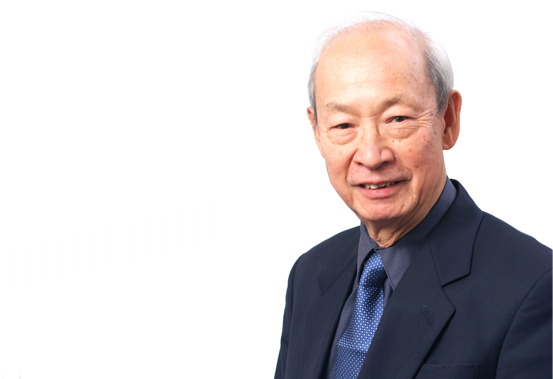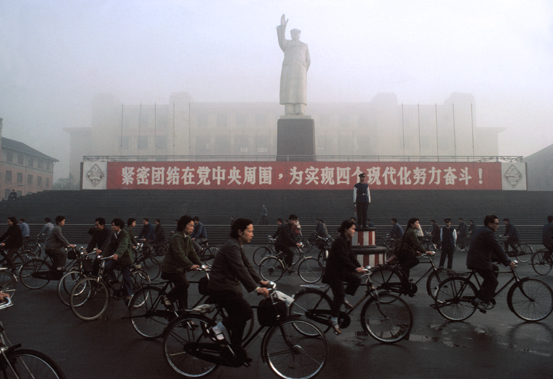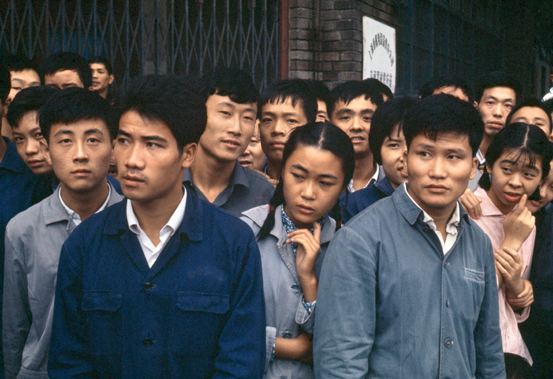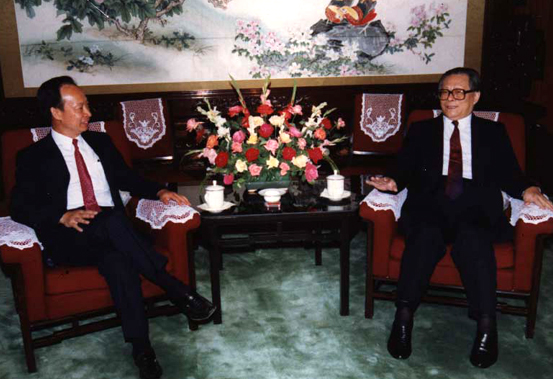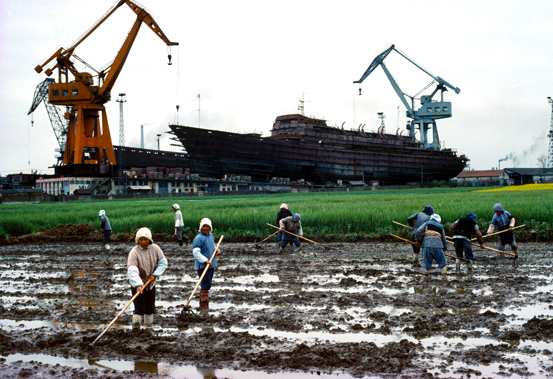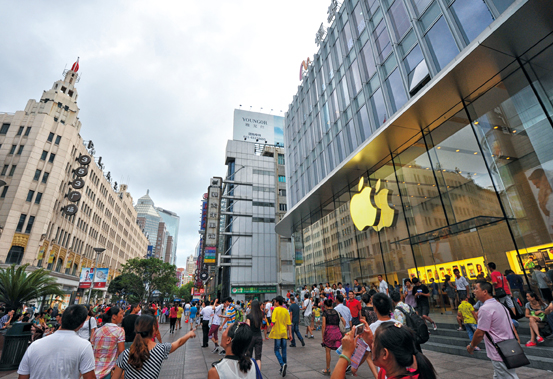Gregory C. Chow is the Class of 1913 Professor of Political Economy, Emeritus, at Princeton University, a member of the College of Business International Advisory Board and a major figure in econometrics and applied economics over the past half a century. Here he talks about his experience as a student of Milton Friedman in Chicago, and as the economic adviser to successive leaders of China in helping to introduce western market economics to China.
You were a student of Milton Friedman in Chicago. What kind of learning environment did he foster?
I entered the University of Chicago as a graduate student in 1951 and took Milton Friedman's course on price theory during the first semester. He was very impressive as a lecturer, making each point concisely and effectively. He believed that simplicity is the most important virtue when one tries to explain economic phenomena.
When I became a Distinguished Fellow of the American Economic Association in 2014, the citation included: "Chow's innovative research in both econometrics and applied economics combines his views that simplicity and transparency in econometric research are primary virtues." This I have learned from Milton Friedman.
Was there a sense that a school of thought was evolving?
Not really – I tried to understand economics, and especially econometrics. In 1951 the University of Chicago was the only university offering a graduate course in econometrics. In the first semester I had great teachers but Friedman impressed me the most. At the time I wasn't sure what was liberal and what was conservative because I studied economics as a science and not as a political philosophy. Later people would call the Chicago School conservative.
How is econometrics positioned in the intellectual history of economics?
Nowadays every graduate school of economics would require students to learn three subjects: micro theory, macro theory and econometrics. Hence econometrics has become mainstream. But when I was a graduate student there was no such subject. Chicago was the exception. The Cowles Commission of Research in Economics had been established in the 1930s and that was a centre of research on what was to become the subject of econometrics.
Was this a time when economic theory was much discussed?
Friedman was teaching economic theory and Paul Samuelson was teaching theory at MIT. It was really only taught at the top schools. Theory and quantitative work are complementary. Some people know theory without doing much quantitative work. Other people do more quantitative analysis and use a simple theory. You need a balance between theory and empirical work. Some economists are creative and have a new idea, a new way of looking. Then empirical work comes later to test theory.
Did you make theory explicit before going to the data?
Yes. A lot of people don't have a basic idea in mind when they do research. Some people start with data mining and then make a story out of it. But in my case it's the other way round. I have to think through the problem before I look at the facts. I try to theorise and to explain a certain economic phenomenon, and then I look at the data. So when I started my thesis I walked back and forth in the basement of the Chicago building for hours to formulate a theory for the demand of automobiles, a subject of my thesis.
The invention of M1 and M2
You attended Friedman's seminar when he first introduced M1 and M2?
When I first went to Chicago, Friedman was considered a theorist. He later conducted a workshop on money which started in 1954. He tried to look at the relationship between GDP and money on the one hand, versus the relationship between GDP and government expenditure on the other.
The monetarists, of whom Friedman was the leading figure, thought that money explains GDP more than government expenditure or autonomous expenditure does. Friedman wanted to do regressions of GDP on autonomous expenditure and on money supply to find out which variable can explain GDP better. But of course you have to define money. What do you mean by money? There is currency plus demand deposits (money in checking accounts), and that he called M1. And then there is M1 plus savings deposit. He casually said, "let's call that M2."
Many years later I met him and assumed that he knew that M1 and M2 were invented in that seminar. "Oh, no!" he said. He had forgotten about it. I then challenged him to find some publication mentioning M1 or M2 before the time of his seminar in 1954.
Was there a sense that this was going to be something big?
Not really – when you do research you have to define the variables, so it was quite natural. But people picked it up later – because that was just about the time when serious research on monetary economics began.
Friedman tests Keynes
Milton Friedman was subsequently characterised as a conservative...
He was a much respected teacher, and a conservative is someone who believes in the effective working of the market in solving economic problems without much government intervention. He gave examples of how the market worked, and I didn't realise that this was called "conservative". Later I went to MIT where people like Samuelsson and Robert Solow respected John Maynard Keynes a little more. Keynes had written his ground-breaking book, The General Theory of Employment, Interest and Money1 in 1936, just after the Great Depression of the early 1930s. Some people thought that the depression showed that the market didn't work. The result was President Roosevelt's New Deal. They thought that the market couldn't generate enough demand by itself and as a result many people became unemployed. Keynes believed that you had to add expenditure to get people employed, and this became known as "autonomous expenditure". Fifteen years or so later Friedman was testing Keynes to check if it was really necessary to use such government expenditure to revive an economy.2
This was linked to the various welfare state initiatives that were made during the Second World War years?
Yes, the US did not get out of the depression even in 1937-8, and then came the war with ammunition production etc. which provided full employment. Then people got worried. After the war would we go back to depression in the US? So there was the Full Employment Act in 1946. Congress decided that it was the responsibility of the Federal Government to take steps to act positively and maybe spend money in order to prevent a depression from happening. That act also created the Council of Economic Advisers for the President. It turned out that there was no real problem and that there was economic prosperity after the war.
Did the US Marshall Plan for Europe have something to do with that prosperity?
In so far as the Europeans were given money, and with that they could use it to buy American goods and services, yes. The Marshall Plan helped to solve the problem of American over-capacity by creating demand in Europe.
Economic adviser in Taiwan
In Taiwan, how receptive was the government to using econometrics as a tool for working with macroeconomic problems?
First, economic advice is not necessary quantitative and based on econometrics. In Taiwan from the mid-1960s to the late 1970s government officials were eager to foster the economic development of the Taiwan economy. I was one of the five, sometimes six, major economic advisers, from the US.
The Taiwan side presented the most urgent economic problems. We tried to understand these problems, and came up with proposed solutions. These were then presented for discussion and a set of policy recommendations were reached. They were published in the press in order that the public would understand and support the policies, knowing they had been formulated with the advice of respected economists.
Modern economics enters China
A place of industry - Chengdu, 1980. A statue of Chairman Mao and the slogan "Be united in support of the Central Committee of the Communist Party, fight for the Four Modernisations to become real"
© RM Imaginechina
In the 1980s you started work in Mainland China with Premier Zhao Ziyang.
In 1983 I met with two officials from the Chinese Ministry of Education at my home. They said that they wanted to modernise economics education in China. I was very surprised because China was a communist country. I offered to conduct three seminars to teach economics in China in subsequent years: micro theory in 1984, macro theory in 1985 and econometrics in 1986. This led to my first meeting with Premier Zhao Ziyang in July 1984. He was interested in discussing economic reform. In 1985 the Premier was concerned about possible inflation because money supply had increased by 50% in 1984. At his request, I did an econometric study on inflation in China that was published in 1987.3 I also introduced people who, along with me, had experience in advising the Taiwan government, for example Larry Lau, who later became Vice-Chancellor of Chinese University here in Hong Kong. One photo was published on the front page of People's Daily in June 1984 with the statement that I was invited by the Ministry of Education to teach microeconomics in China. This marked the beginning of the acceptance of modern economics and the use of the term microeconomics in Chinese.
How open was the leadership to new ideas for reforming the economy at that time?
A simple answer is "very open". I was adviser to Premier Zhao, meeting with him one or more times a year from 1984 to 1989. In addition I worked with the top officials of the Commission for Reconstructing the Economic System. The Commission was responsible for formulating policies for economic reform towards a market-oriented economy. These officials, and Premier Zhao himself, were very open-minded. Discussions with them were like discussions in an economics seminar in a university in the US. At other times I communicated with Premier Zhao simply by writing him a letter and mailed it to him by ordinary US airmail addressed to "Premier Zhao Ziyang, State Council, Peking, China".
Shanghai, 1973 - Workers waiting for the presidential procession to pass
© RM Imaginechina
You then worked with Premier Zhu Rongji. How distinctive an economic vision was being developed in China in the 1990s?
I met with Premier Zhu Rongji in 1996 when I led a small group of foreign participants in a conference on the development of the banking and financial system in China sponsored by the Governor of the People's Bank. I asked Premier Zhu what he would do with the large reserves of some US$200 billion (large at that time, but smaller as compared with the amount today). Premier Zhu commented with a smile, "Economists often ask your question, implying that China is keeping too much reserves and should spend it. I think we do not have enough." Later when the Asian Financial Crisis of 1997-8 occurred, Premier Zhu's comment proved to be correct. China had such a large amount of reserves and was thus in a position not only to withstand the crisis but to help the other Asian countries recover from the crisis.
How closely did you work with President Jiang Zemin?
I was the first American to meet Jiang Zemin after he became General Secretary in June 1989. Since 1985 there was a close cooperation between the US and China to promote economics education in China, sponsored by the Chinese Ministry of Education with financial support from the Ford Foundation. A joint committee on economics education and economic research in China was set up, with Vice President Huang Da (later President) of Renmin University serving as chairman for the Chinese members, and me serving as co-chairman of the US members. The joint committee met once a year, alternating in China and the US. A meeting was set up to meet in Beijing in August 1989.
In spite of the Tiananmen Incident on 4th June, 1989 the American members decided to go to the meeting. When I arrived at the Peking Hotel the office of Jiang Zemin called to invite me to meet with him and asked me to invite the other members from the US. I extended the invitation to the group at breakfast the next morning and no one decided to go, possibly because of possible criticism when they returned home. I went alone. Later Prof Huang Da told me that there was uncertainty in government policy after 4th June concerning cooperation with the US, and that the US-China cooperation in economics education was able to continue because the US members were willing to go to Beijing to attend the meeting with their Chinese counterparts. Since then I sometimes communicated with the General Secretary on economic policy, including a suggestion on how to slow down inflation. Jiang Zemin has continued to send me New Year Greetings, up to 2015.
Professor Gregory Chow with General Secretary of the Communist Party Jiang Zemin in August 1989
Loss of the iron rice bowl
China in transition – Shanghai, 1980. Rice paddies near the Hutong naval shipyard, with a passenger vessel under construction
© RM Imaginechina
Was the loss of the iron rice bowl (xia gang) in the late 1990s a necessary stage for the country to go through?
Yes. When China decided to change all state enterprises to shareholding companies in 1998, it was necessary to lay off some workers of the state enterprises. But the government tried to help these workers by providing them with severance pay, and continued to pay them about two thirds of their regular pay. Many workers were ingenious enough to find work in the market place, with some opening a small shop, for example.
Did the streamlining of state owned enterprises go far enough?
Reform of state enterprises has not been completed for many reasons including the bureaucratic managers appointed by the government. When Zhu Rongji became premier he could not replace many of these managers for political reasons. This was a major reason for him to have China join the WTO in 2001 in order to provide competition to the state enterprises.
Did you also work with Premier Wen Jiabao?
I never met Wen Jiabao but he knew about me as he had served under Premier Zhao Ziyang. I wrote to Premier Wen on several occasions, each time recommending a certain economy policy, including policies to reduce pollution, improve health care, etc. He always responded by asking the relevant minister or vice minister to meet with me to discuss the topic concerned. But my recommendations did not have any effect. These government officials were not openminded. They did not engage in serious discussions with me but only politely talked with me because the Premier had suggested the meeting.
The modern dual economy
How far is a dual economy emerging in China, e.g. with the major tech companies (such as Alibaba) offering credit and functioning as banks?
This was a major development of the Chinese economy. The rapid growth of such private enterprises has been happening for about a decade. It is the high quality of the leading Chinese entrepreneurs which has driven China's rapid growth. As the market economy becomes more mature and the Chinese entrepreneurs have learned up-to-date technologies and financial practices such companies as Alibaba will appear.
What signals did the China government's response to the summer 2015 stock market crash send to Chinese investors and the wider world?
The Chinese government was responsible for the stock market crash by encouraging the Chinese people to buy stock of state-owned companies for the purpose of increasing capital for these companies. When the prices of the stocks went up because of large purchases, people speculated and the prices went up even higher, leading to a speculative bubble. When the bubble burst there was no way for the government to stop it. The prices of the stocks remain low today as compared to the peak in June 2015, although somewhat above the bottom.
Ideology and markets
Do you see a global future where ideology is less important?
We live in a world market and, for example, China actually imports a lot of food from the US. Some people say importing food is fine, but oil is more strategic. Therefore you have to ensure its supply. I don't think China has any problem, because it has many friends and has done quite well with its political diplomacy. One difference between China and the US is that China says they always try to work together with – and respect – other people's form of government and interest. They always talk about cooperation, whereas America is like a big brother saying things like "Maybe you should introduce democracy". China would not interfere in other countries' affairs as much, and is in this sense neutral. You can be communist, capitalist, a dictator; that is your business. China says: I will cooperate with you. If you have a democracy fine, but if you have other political institutions, that is also fine.
- ^Keynes, J.M. (1936). The General Theory of Employment, Interest and Money, Harcourt, Brace and Company, US.
- ^Friedman, M. (1968). The role of monetary policy, American Economic Review, LVIII.
- ^Chow, G.C. (2007). Money and price level determination in China. Journal of Comparative Economics, 11, pp. 319-333.
